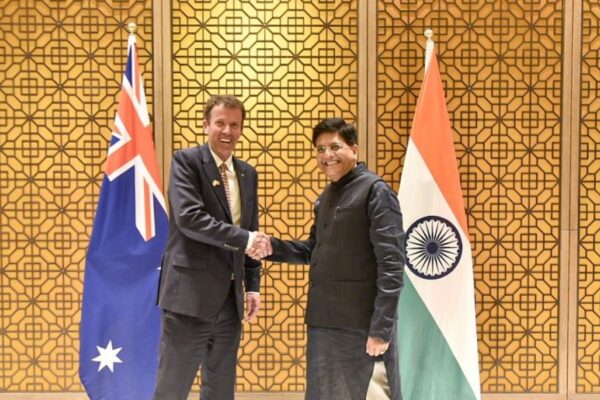In recent years, there has been significant growth in the trading relationship between India and Australia. Both countries will finalize an interim trade deal in 30 days, as announced on 11 February 2022, with the hope that a bilateral free trade agreement (FTA) can be ready for sign-off by the end of March. Australian Trade Minister Dan Tehan spent last week in New Delhi to fast-track the talks.
An interim FTA between India and Australia will lower import duties and expand market access for a limited number of items and sectors. India-Australia bilateral trade exceeded USD$12 billion last year. Major Indian exports to Australia are petroleum products, medicines, polished diamonds, gold jewellery, apparel etc, while key Australian exports to India include coal, LNG, alumina and non-monetary gold.
Both sides also hope to conclude negotiations for a complete India-Australia Comprehensive Economic Cooperation Agreement (CECA) in the 12-18 months after the interim deal is finalized. The full-fledged CECA would cover most trade in goods and areas such as services, investments, government procurement, and intellectual property.
Australia is likely to get better access to the Indian market for its coal, wheat, wine and timber – all have which have been impacted by sanctions imposed by China. Australian producers are focused on encouraging market access for products not made in India or commodities where India experiences a shortfall in supply, such as pulses, grains, and oilseeds. Indian interests lie in securing market access for its textiles, leather, and gems and jewellery.
However, there have been nine rounds of negotiations on the FTA since 2011 and sensitivities remain on both sides, leaving the possibility that Australia’s hopes for better access for our dairy, wheat and beef may still be frustrated.
India is an awakening giant with a population of over 1.3 billion. The country’s relatively young population and projected growth present significant trade opportunities for the Australian economy across sectors such as education, agriculture, energy, resources, tourism, healthcare, financial services, infrastructure, science and innovation and sport.
In 2020, India was Australia’s seventh-largest trading partner and sixth largest export destination, driven by coal and international education. The total value of two-way foreign direct investment between both countries was valued at US$1.04 billion in 2020. Bilateral trade between India and Australia was US$12.3 billion in 2020-21 and US$12.6 billion in 2019-20, with the trade balance in Australia’s favour.
It is estimated that over a 20-year period an Australia-India FTA could result in a net increase in Australia’s GDP by up to $43 billion and India’s GDP by up to $46 billion.
Recently we reported on the Regional Comprehensive Economic Partnership (RCEP) and this week India reiterated that its decision not to join that agreement was “because it was not in the economic interest of RCEP.”
Australia’s financial stability has developed due to our ability to export manufacturing inputs to countries like China, Japan and Korea. As each of these strong manufacturing economies developed, benefits have flowed to Australia. This presents a good argument for becoming a major trading partner with India as well.
As a licensed Customs Broker and International Freight Forwarder, Colless Young offers you professional advice on all your international trade and shipping activities. We provide a complete range of logistics services, both air and sea cargo, for your imports and exports at all Australian ports and airports. We handle trucking, warehousing and fumigation treatment. Call us for advice on current shipping schedules and freight rates.

